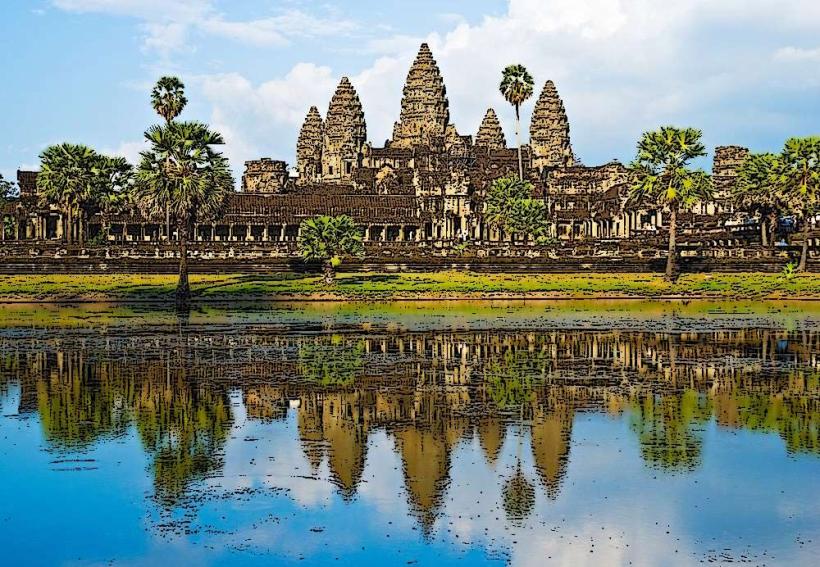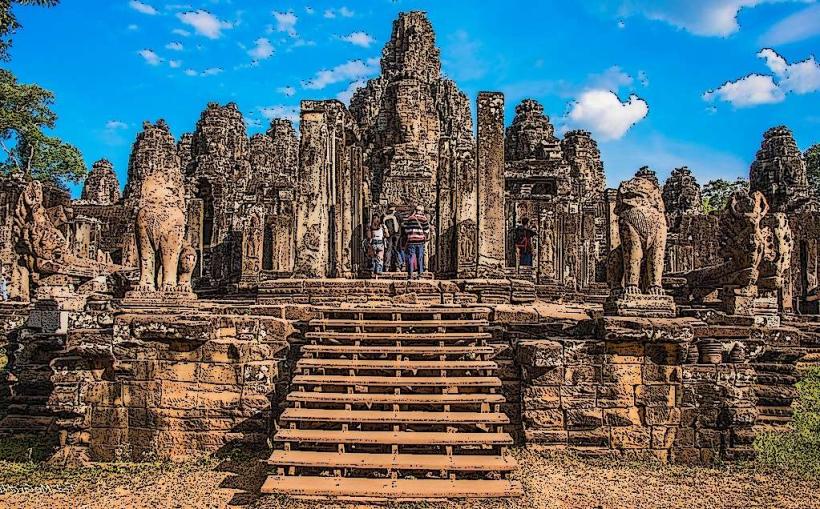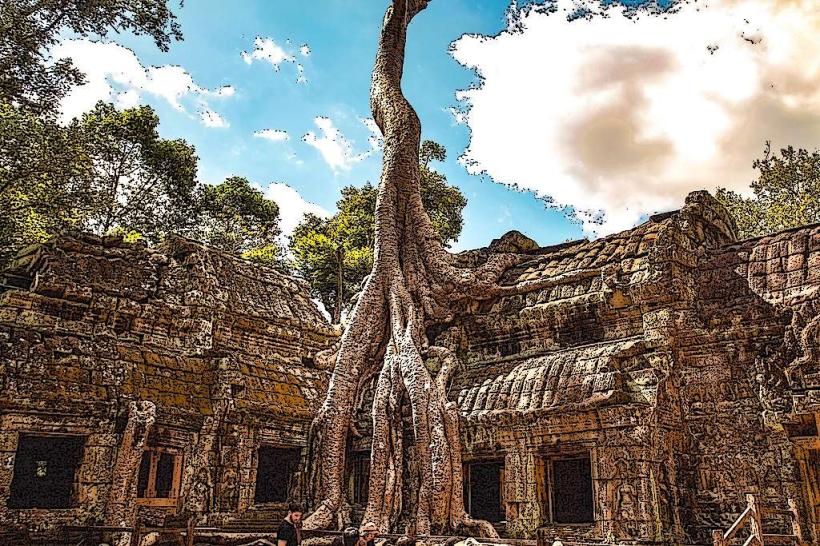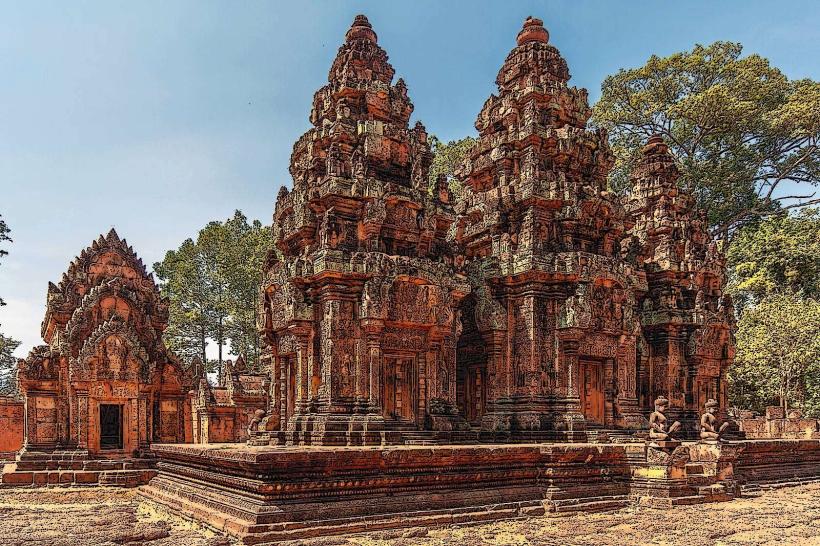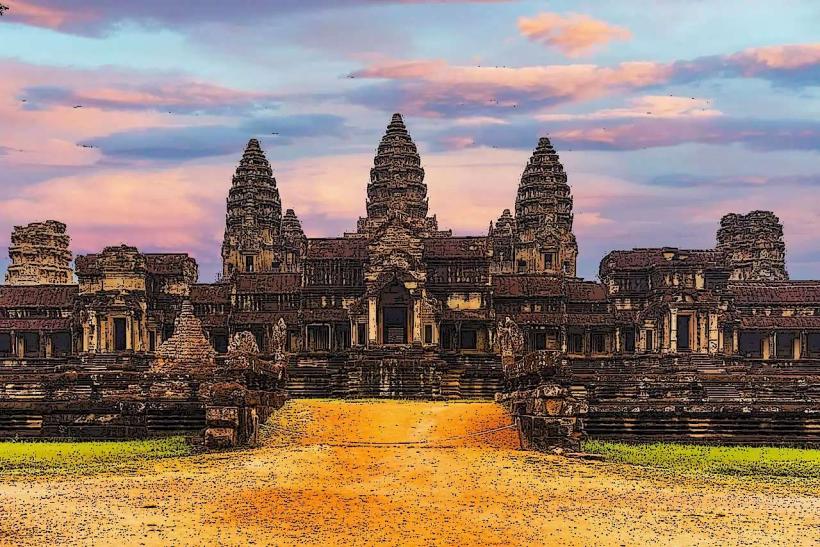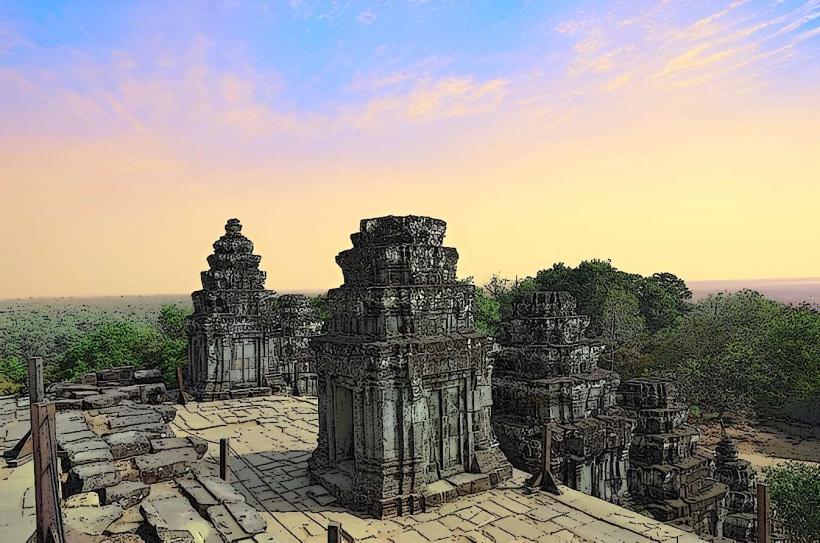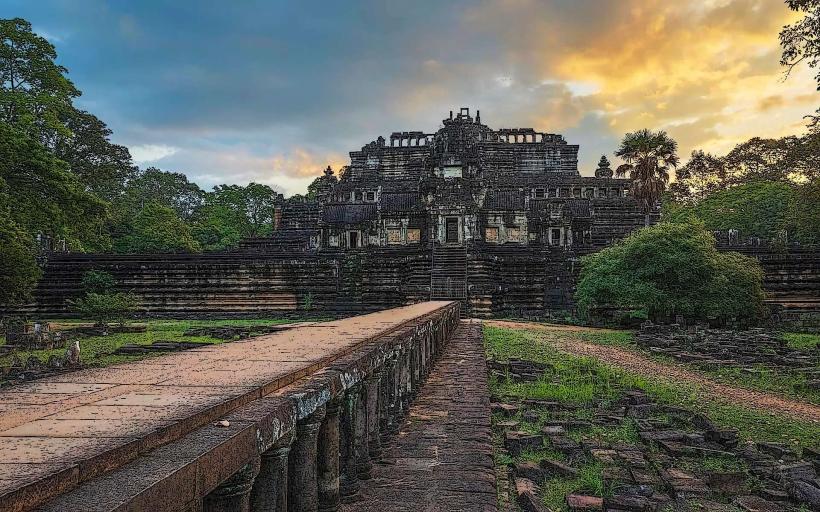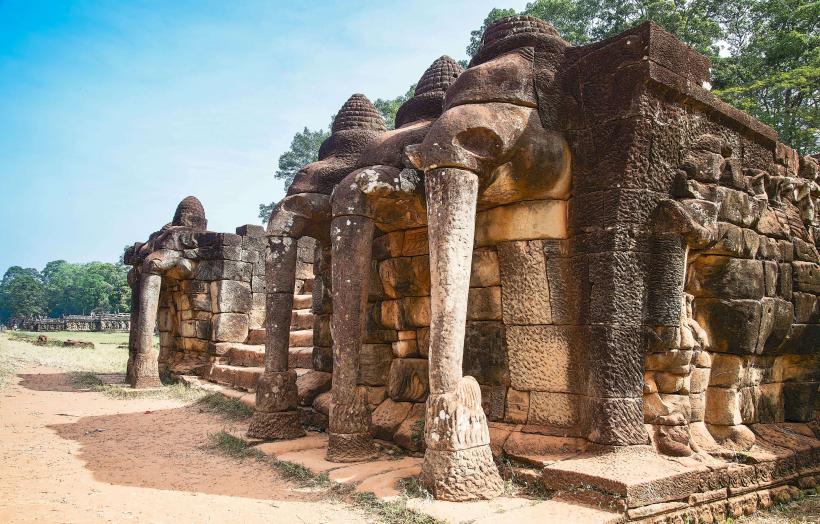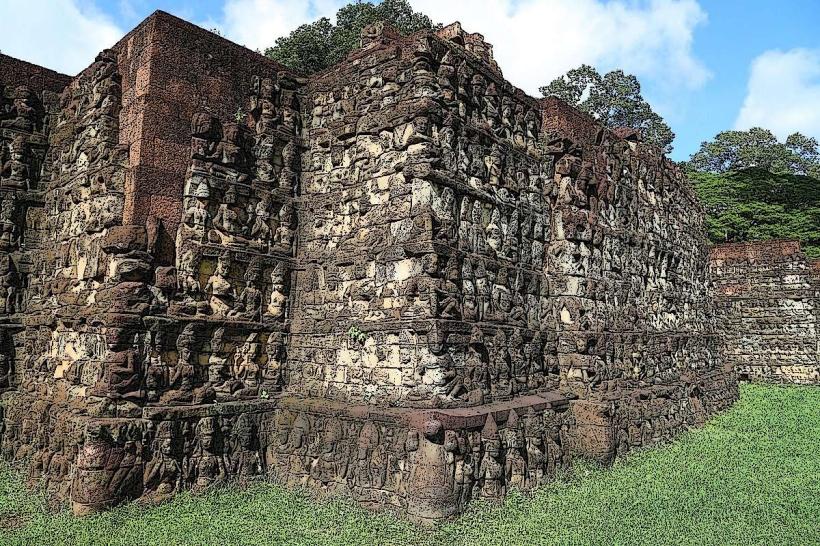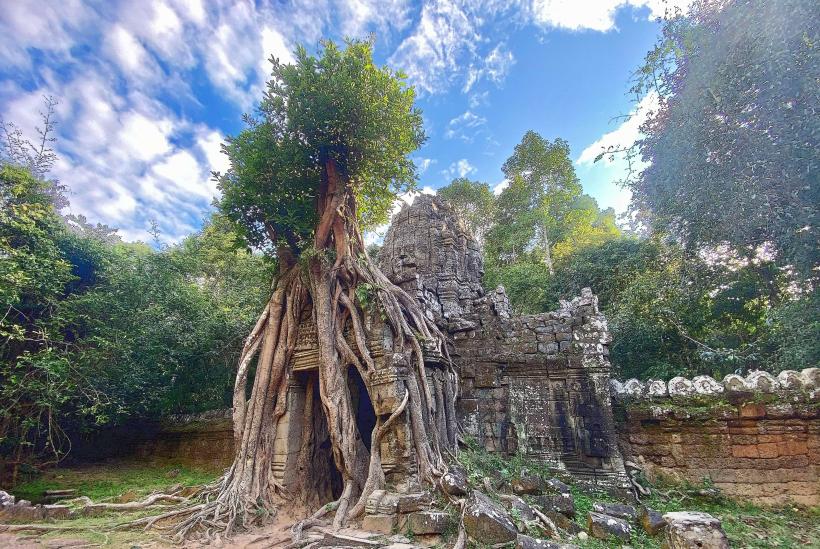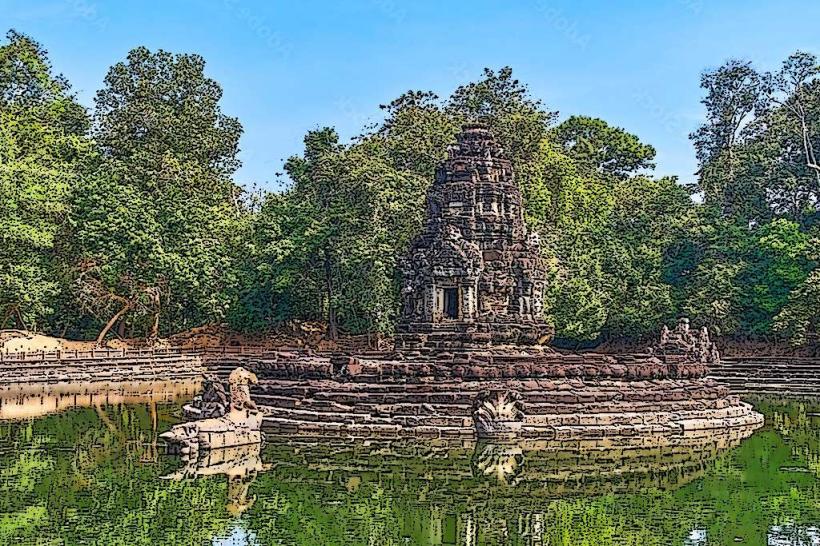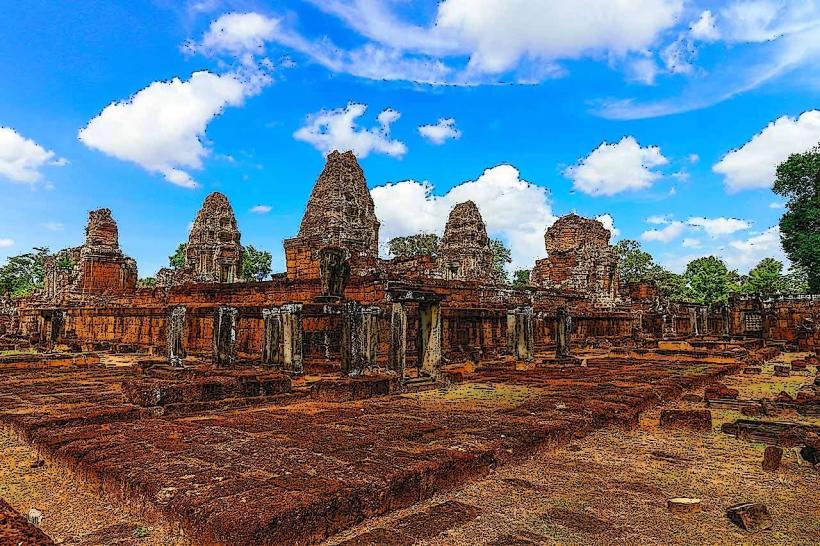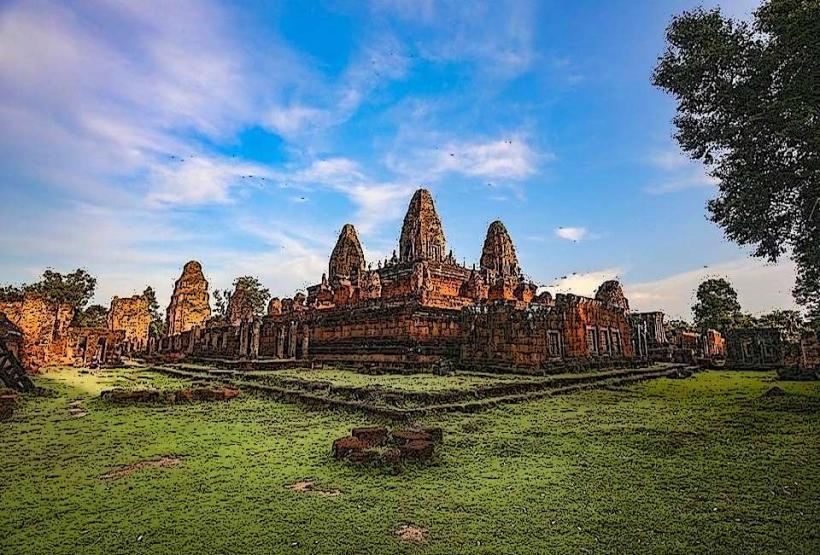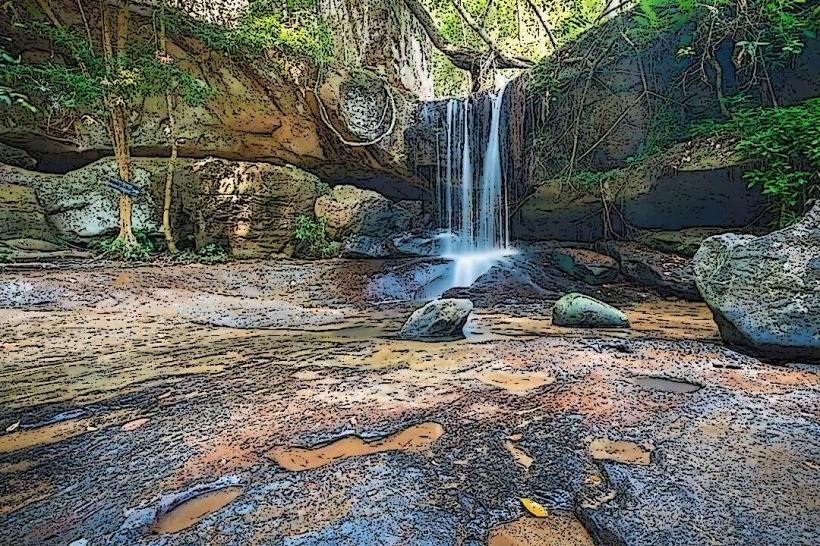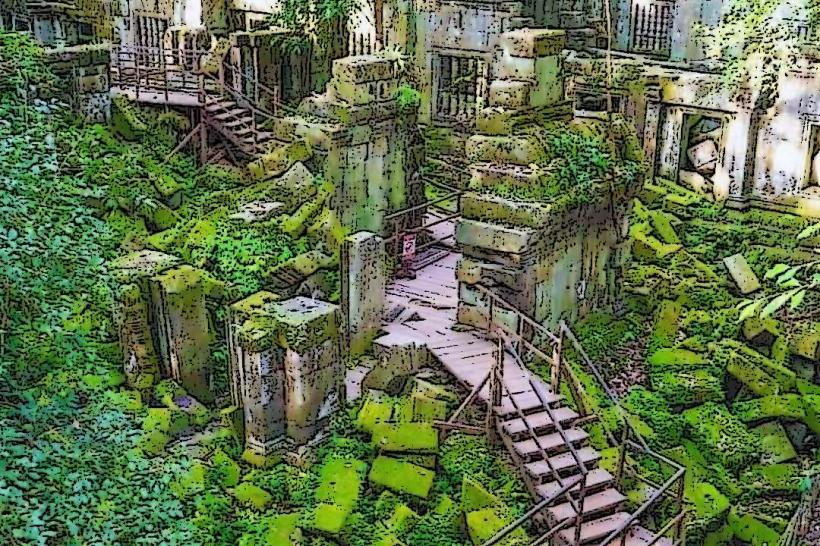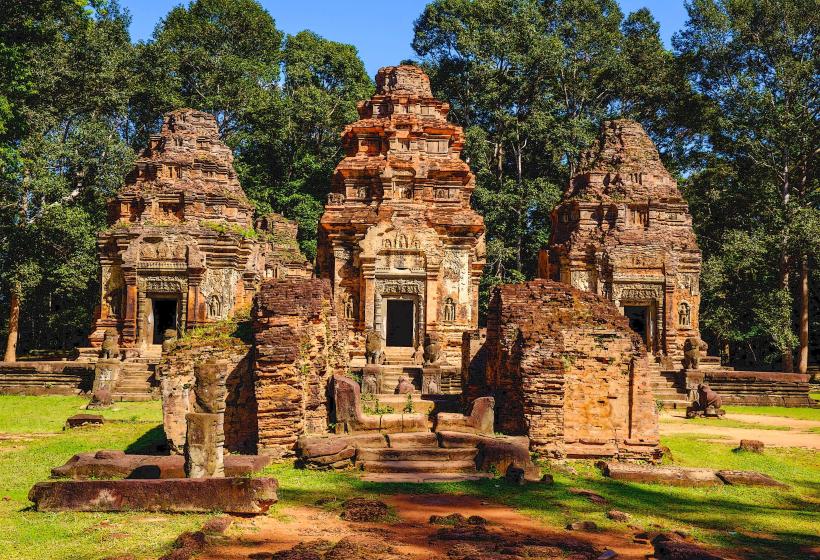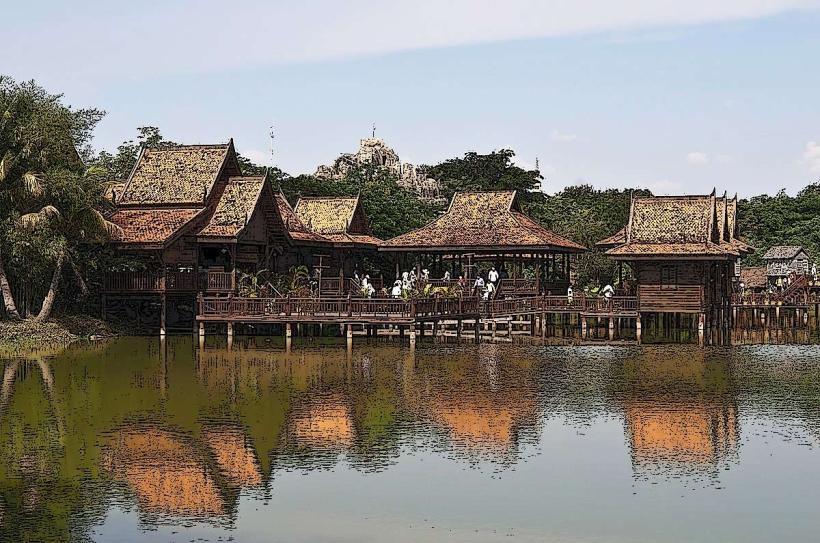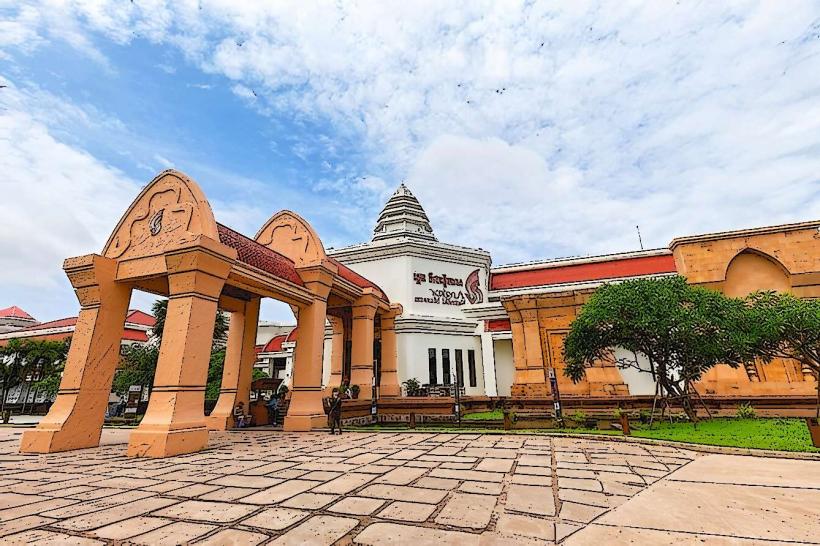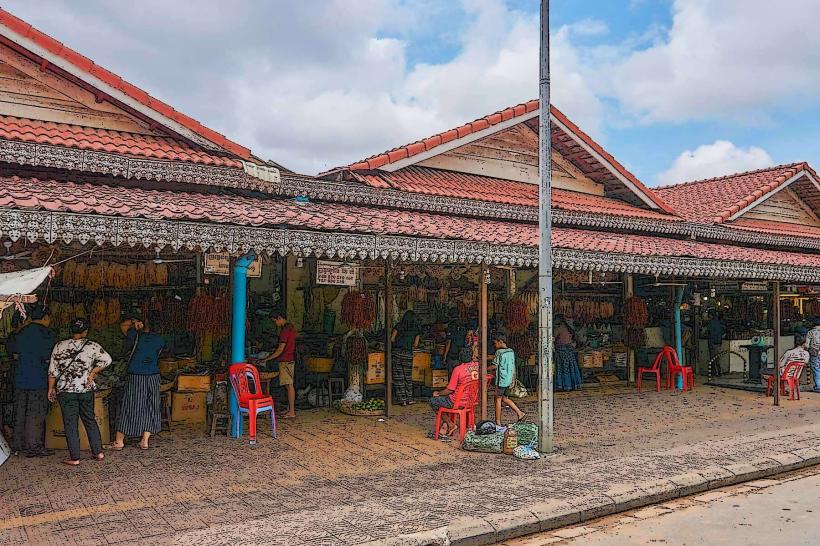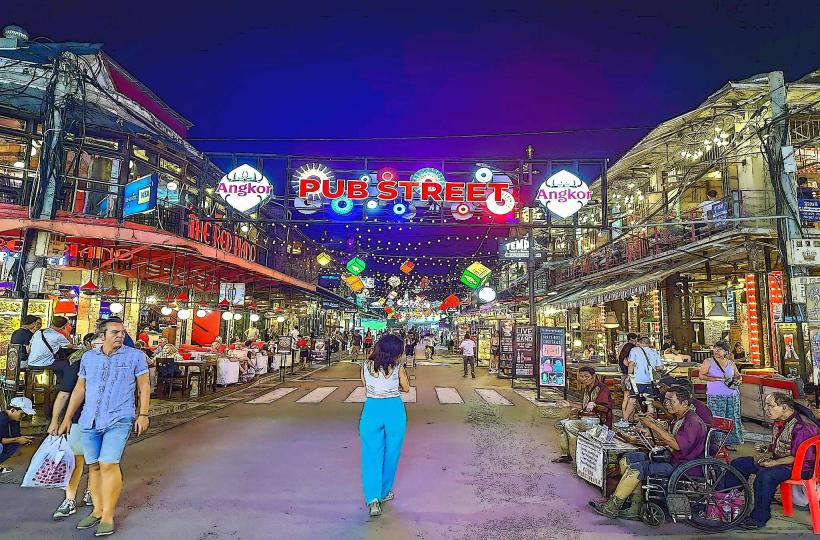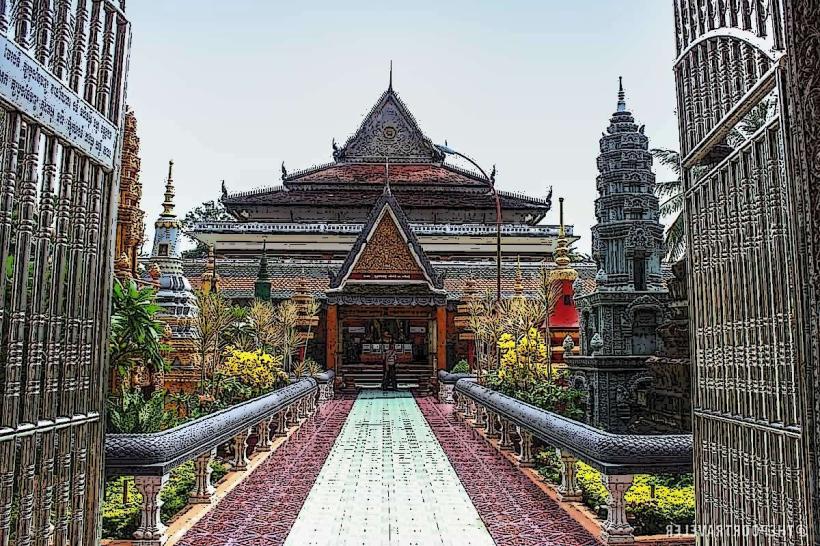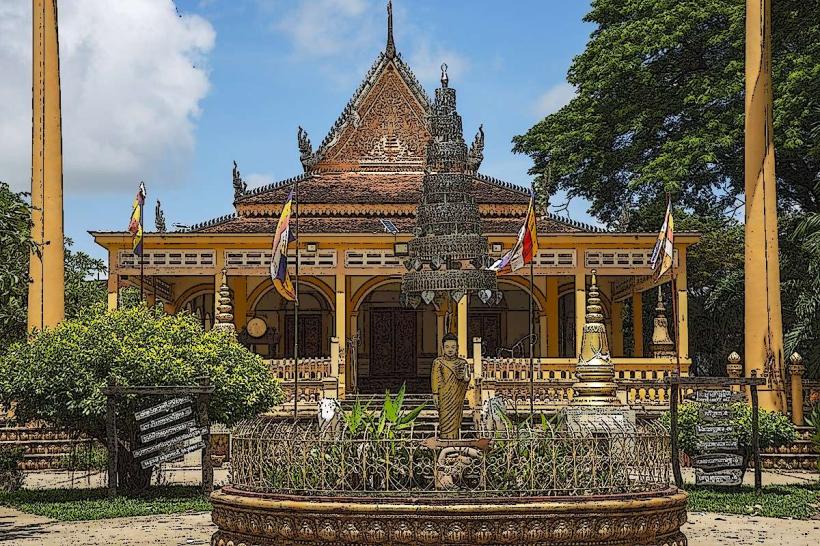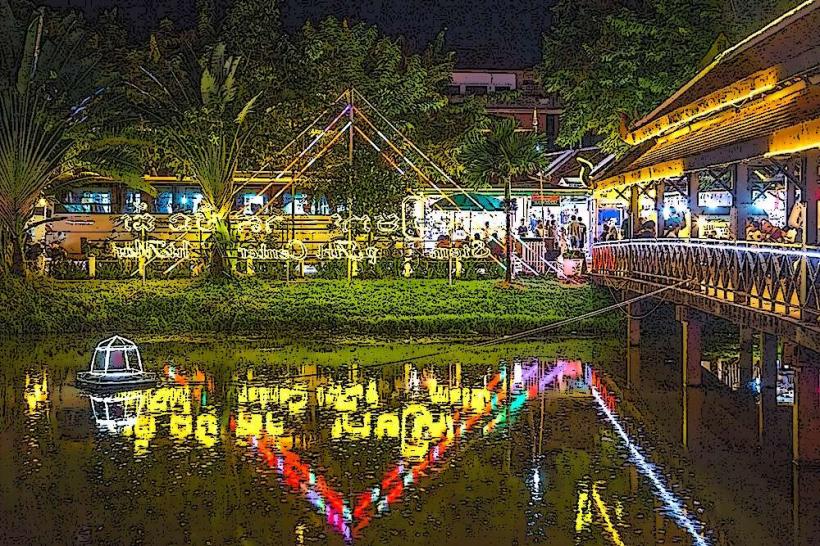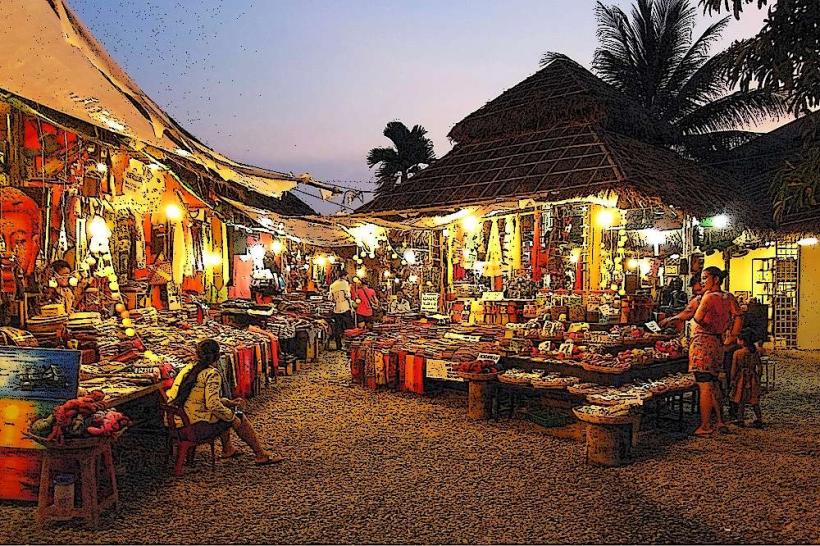Information
Landmark: Preah KhanCity: Siem Reap
Country: Cambodia
Continent: Asia
Preah Khan – The Sacred Sword Temple of Angkor
Preah Khan, meaning "Sacred Sword", is one of the most significant and sprawling temple complexes in the Angkor Archaeological Park near Siem Reap, Cambodia. Built in 1191 AD by King Jayavarman VII, it served as a Buddhist monastery, university, and temple while also functioning as a temporary royal residence before the construction of Angkor Thom.
Often compared to Ta Prohm due to its overgrown jungle setting, Preah Khan is unique because it has been partially restored but still retains its mysterious, atmospheric charm. Unlike the more famous temples like Angkor Wat and Bayon, Preah Khan is less crowded, offering visitors a more intimate and immersive experience.
History of Preah Khan
Preah Khan was built on the site of a major battle between the Khmer Empire and the Cham invaders, who had occupied Angkor in 1177 AD. After defeating the Chams, King Jayavarman VII constructed Preah Khan as a symbol of victory and dedicated it to his father, Dharanindravarman II.
It was not only a temple but also a Buddhist monastery and university, where over 1,000 monks and scholars studied. The temple played a key role in spreading Mahayana Buddhism, though later Hindu rulers attempted to modify or replace Buddhist imagery.
Architectural Features of Preah Khan
1. Layout and Design
Preah Khan covers 56 hectares and features a rectangular layout with four main entrances, aligned with the cardinal directions. The temple complex is surrounded by a moat and enclosed by a laterite wall.
The eastern entrance was dedicated to Buddhism, while the other three entrances were dedicated to Shiva (West), Vishnu (North), and Brahma (South), reflecting the multi-religious nature of the site.
2. The Sacred Sword and Central Sanctuary
- The name Preah Khan suggests that the temple may have once housed a sacred sword, possibly a symbol of Khmer royal power.
- The central sanctuary was originally dedicated to Avalokiteshvara, the Bodhisattva of Compassion.
- The temple is aligned in a linear fashion, with shrines, halls, and courtyards leading to the heart of the complex.
3. The Hall of Dancers
One of the most striking features is the Hall of Dancers, located near the entrance.
- The hall has intricate bas-reliefs of Apsaras (celestial dancers) performing sacred dances.
- The pillars and walls are elaborately decorated, showcasing the Khmer artistic mastery.
4. The Overgrown Trees and Jungle Atmosphere
Like Ta Prohm, Preah Khan is famous for its massive silk-cotton and strangler fig trees, whose roots intertwine with the temple’s stone structures.
- The overgrown trees create a dramatic, mystical ambiance, making Preah Khan one of the most photogenic temples in Angkor.
- Some doorways and corridors are partially collapsed or blocked by tree roots, enhancing its Indiana Jones-style appeal.
5. Unique Two-Story Structure
- One of the most unusual features of Preah Khan is a two-story pavilion with round columns, which is rare in Khmer architecture.
- The purpose of this structure remains unknown, though some scholars suggest it may have been used as a library or royal meeting hall.
6. Hidden Bas-Reliefs and Carvings
- The temple walls are covered with detailed carvings of Hindu and Buddhist deities, warriors, and celestial beings.
- Some carvings depict scenes of battle, showcasing Khmer victories over the Chams.
- Many Buddhist images were defaced or altered by later Hindu rulers, reflecting the shifting religious history of the Khmer Empire.
Religious and Cultural Significance
Preah Khan was originally a Mahayana Buddhist temple, but like many Angkorian sites, it was later influenced by Hinduism and Theravada Buddhism. The coexistence of Buddhist and Hindu imagery demonstrates the fluid religious transitions within the Khmer Empire.
- Built as a Buddhist monastery and university, it once housed hundreds of monks and scholars.
- Later, it was modified to include Hindu elements, particularly under King Jayavarman VIII, who reverted to Hinduism and ordered the destruction of many Buddhist statues.
- Today, Preah Khan stands as a testament to Cambodia’s spiritual and cultural evolution.
Visiting Preah Khan
1. Best Time to Visit
- Early morning (before 9 AM) or late afternoon (after 3 PM) to avoid the heat and crowds.
- The temple’s overgrown trees and ruins look particularly stunning in soft sunlight.
2. Getting There
- Located just north of Angkor Thom, about 2 km from Bayon Temple.
- Can be reached by bicycle, tuk-tuk, or guided tour.
- Many visitors combine a trip to Preah Khan with Neak Pean, Ta Som, and Banteay Prei.
3. What to Expect
- A sprawling, maze-like temple with hidden passageways and courtyards.
- Stunning tree-covered ruins, similar to Ta Prohm but less crowded.
- Long corridors, sacred carvings, and a mystical jungle atmosphere.
Conclusion
Preah Khan is one of Angkor’s most enchanting and historically significant temples. With its overgrown trees, intricate carvings, and hidden sanctuaries, it offers a captivating glimpse into the spiritual and architectural brilliance of the Khmer Empire. Unlike the more famous Angkor Wat or Bayon, Preah Khan retains a serene, off-the-beaten-path charm, making it a must-visit for history lovers, photographers, and explorers.

